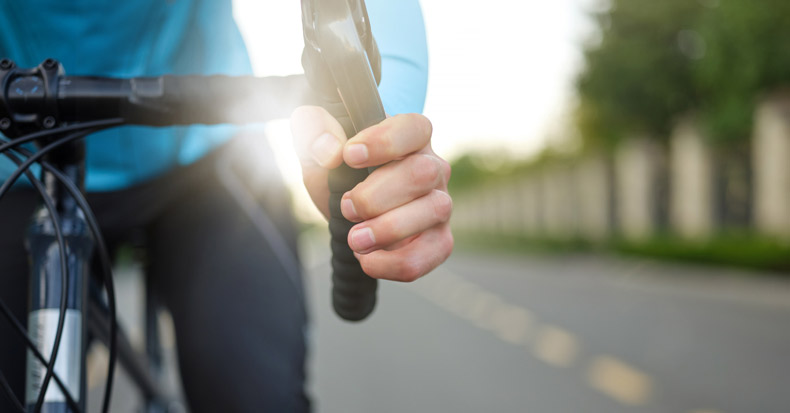Though peripheral neuropathies often develop in individuals whose daily activities involve fast, repetitive motions, no rest, awkward hand postures, firm gripping, and excessive vibration exposure like office workers, construction workers, line workers, etc., there is one group that meets these various criteria that we hardly consider: cyclists.
It’s estimated that nearly 800,000 Americans commute to work via bicycle and even more use their bike for recreational activities. It’s been reported that roughly 10% of the United Kingdom population rides a bicycle at least once a week. There are many types of bikes as well, such as road, mountain, hybrid, touring, city/commuter, BMX, electric, cyclocross, recumbent, and more—each catering to a unique environment and purpose. Although cycling serves as an excellent way to keep fit and healthy, even cyclists who avoid traumatic injury can still find themselves in pain.
One such injury is called cyclist’s palsy in which the combination of prolonged dorsiflexion (bent upward) of the wrist, strong grip, carrying the weight of the upper body, and vibratory forces from the ground can hinder the ulnar nerves as they pass through the wrist. This can result in pain, numbness, and muscle atrophy in pinkie and pinkie side of the ring finger, as well as the part of the hand between those fingers and the wrist. As with carpal tunnel syndrome, symptoms tend to come on gradually and are often ignored by cyclists who wish to carry on their normal activities. It’s only after symptoms become severe enough that riding becomes unbearable that they begin exploring treatment options.
The first step in the treatment process is accurate diagnosis. This involves a careful review of the patient’s history, as well as an examination to confirm there is ulnar entrapment at the wrist. In some cases, the patient may have co-occurring median nerve entrapment at the wrist (carpal tunnel syndrome) and/or ulnar nerve entrapment elsewhere along its course from the neck (double crush syndrome). If such issues are identified, then treatment will need to address them or the patient may not have a satisfactory outcome, which in the case of a cyclist would be to get back on their bike without pain.
Treatment will involve a multimodal approach that includes manual therapies, nerve gliding exercises, stretches, rest, ice (and other anti-inflammatory measures), and even ergonomic adjustments to the bike itself, including changes to the handlebars or grip. In most cases, such a conservative approach will benefit the patient. However, if the condition has progressed too far and there is nerve damage, the patient may be referred to an allied healthcare provider for corticosteroid injections or even surgical consultation. Or worse (to the hardcore cyclist at least), they may have to give up their hobby! Hence, the importance of seeking care early in the course of the disease when symptoms are mild.
